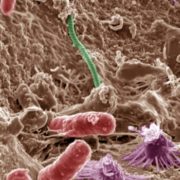
Opinion: Plant pathogen effector proteins as manipulators of host microbiomes? (Mol Plant)
Plant Science Research Weekly, Research, Research BlogTo understand disease development, effector research has mainly focused on the direct interaction of pathogen-derived molecules with plant host targets, or their sensing by surface or intracellular receptors. Recently, attention has turned to the plant microbiome and its key role in maintaining plant…
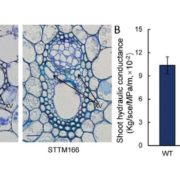
Knock-down of rice microRNA166 confers drought resistance through changes in leaf morphology (Plant Physiol.)
Plant Science Research Weekly, Research, Research BlogUnder drought conditions, moderate leaf rolling improves yield in rice by reducing water loss and allowing efficient photosynthesis (leaf upright position). In STTM166 transgenic rice plants, miRNA166 is knocked down (STTM means "short tandem target mimic") and the plants constitutively exhibit the…
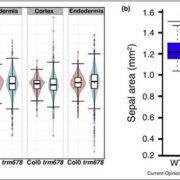
Review. Use it or average it: Stochasticity in plant development (Curr. Opin. Plant Biol.)
Plant Science Research Weekly, Research, Research BlogIn this interesting review, Roeder describes the importance of stochasticity in plant development. She starts off with an explanation: “A process that can be analyzed statistically but not predicted precisely is stochastic. Stochasticity does not imply the absence of regulation, just that the regulation…
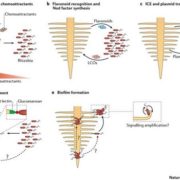
Review. Rhizobia: From saprophytes to endosymbionts (Nat. Rev. Microbiol.) ($)
Plant Science Research Weekly, Research, Research BlogOne of the best characterized plant-bacteria interactions is that between legumes and rhizobia. This review by Poole et al. explores rhizobia in their non-plant associated state (as saprophytes that derive energy and nutrients from organic matter in the soil), through the complex signals that lead to…
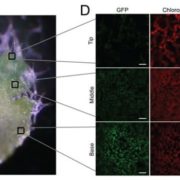
Control of retrograde signaling by rapid turnover of GENOMES UNCOUPLED 1 (Plant Physiol.)
Plant Science Research Weekly, Research, Research BlogCommunication between chloroplast and the nucleus is crucial to accomodate changes in the environment as well as regulate development of the chloroplast itself. Five GENOMES UNCOUPLED (GUN2 to -6) genes were previously described to regulate plastid-to-nucleus communication by affecting the synthesis…
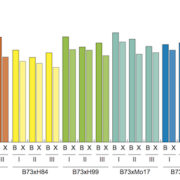
Single Parent Expression (SPE) of non-syntenic genes in maize hybrids (Curr. Biol.) ($)
Plant Science Research Weekly, Research, Research BlogIn maize, it has long been known that the crossing of two inbred lines can produce a hybrid offspring with higher yield than the parents. Baldauf and collaborators have studied the gene expression of 6 hybrid lines coming from 7 distantly related inbred lines. One line, B73, was chosen as the common…
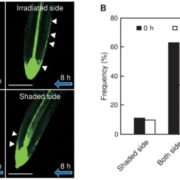
Asymmetric auxin distribution and root tropisms (Plant Cell Physiol.) ($)
Plant Science Research Weekly, Research, Research BlogThe asymmetric distribution of the phytohormone auxin is essential for tropic responses of seed plants but it is unclear if this distribution is essential for root negative phototropism as well. To understand the role of auxin distribution in root negative phototropism in Arabidopsis, Kimura and colleagues…
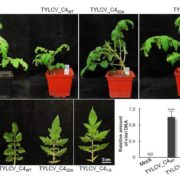
A virus-targeted plant receptor-like kinase promotes cell-to-cell spread of RNAi (PNAS) ($)
Plant Science Research Weekly, Research, Research BlogViruses can move from cell to cell through plasmodesmata. Small interfering RNAs (siRNAs) are key components in the plant's arsenal against viruses. They function by harnessing the AGO system to target and cleave viral RNA, thus silencing the viruses. Like the viruses they target, siRNAs move from cell…
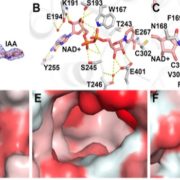
Auxin synthesis contributes to virulence of Pseudomonas syringae (PLOS Pathogens)
Plant Science Research Weekly, Research, Research BlogPlant pathogens have developed a large range of strategies to allow them to have successful interactions with their plant host, including physiological manipulation. For example, Pseudomonas syringae, the cause of speck disease in many plant systems, manipulates the auxin phytohormone physiology in its…

